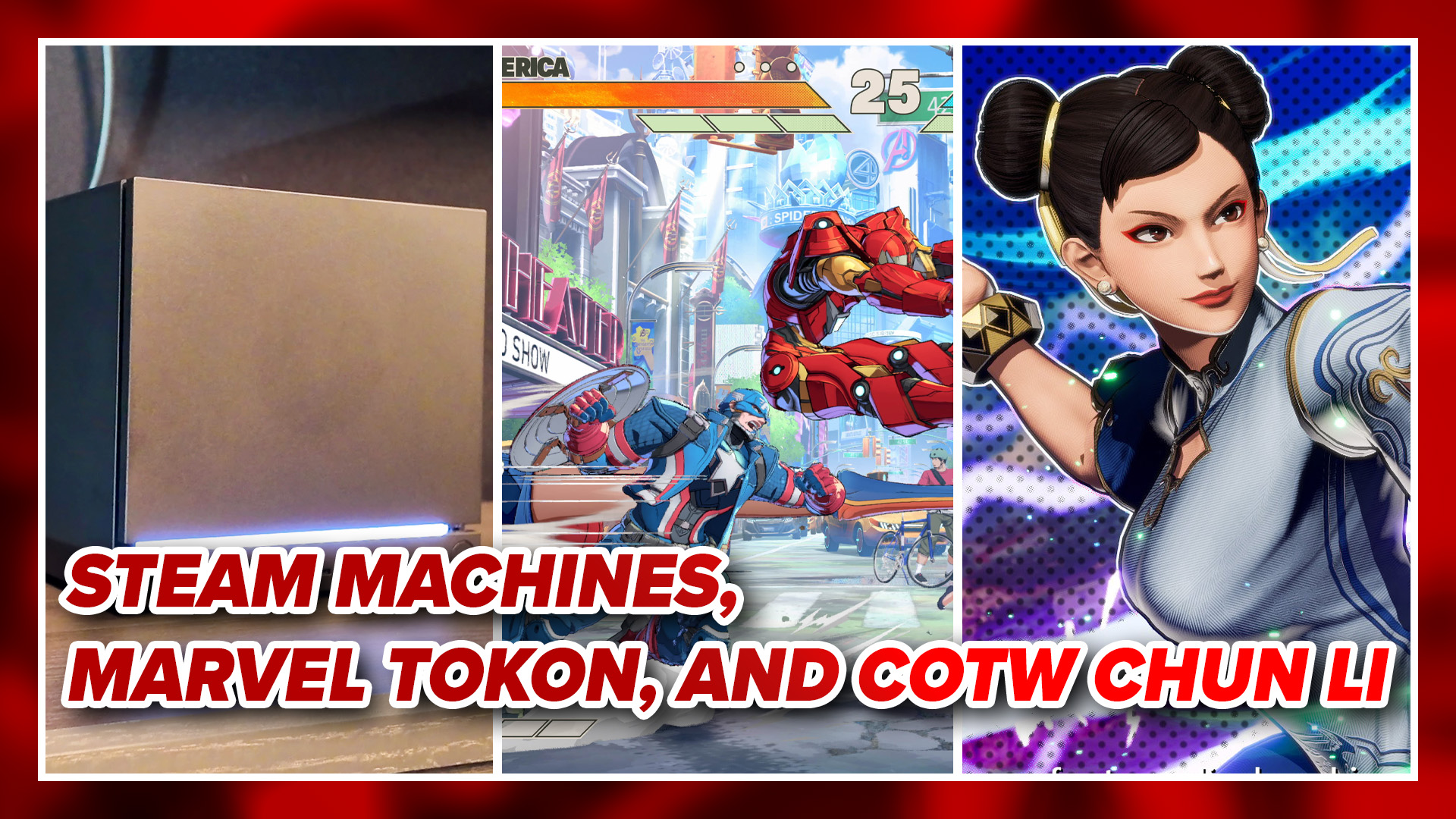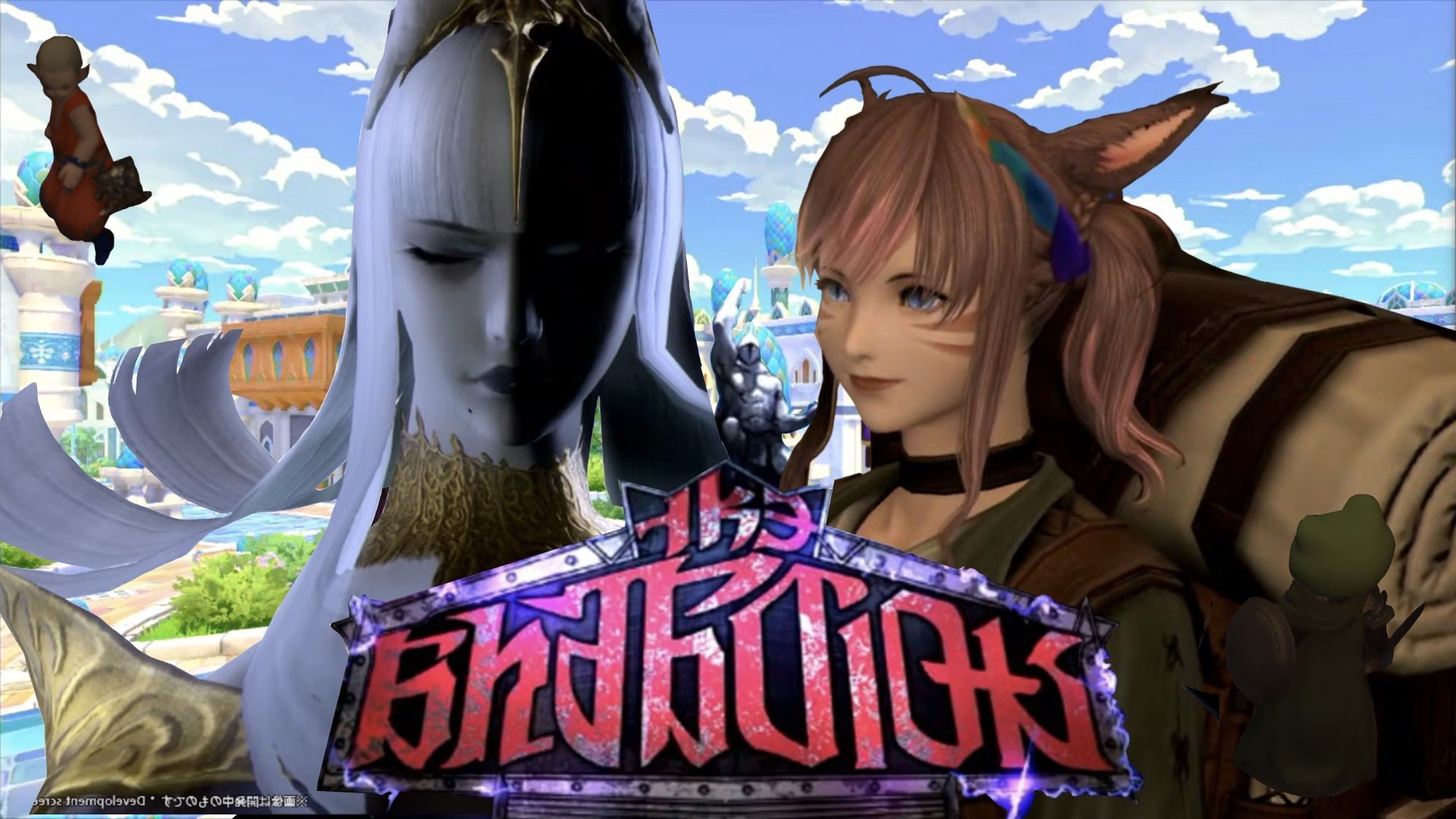
Though I had passed the booth for Autumn Games several times on my first day of PAX East, it wasn’t until late on the second day that I found time to drop by. That night, the exhibition hall floor was closing and I was on my way out when I ran across fellow MTB writer Rob Hill-Williams. While everyone was filing out the massive doors of the hall, we decided to try out one last game before we followed the crowd. To our immediate left were a number of playable stations for the game Skullgirls, a unique looking fighting game which neither of us knew much about. After fighting against Rob for a number of rounds, I knew I was hooked by it. Little did I know that after spending extended time with it the next day, Skullgirls would become not only a name on my radar but also my favorite game at this year’s PAX East.
When looking at the game in motion, Skullgirls is an impressive title. By all means a traditional style 2D fighting game, the graphic engine in Skullgirls is actually one that runs high resolution 2D sprites on a 3D background. Each character, created by comic artist Alex Ahad, is drawn at twice the screen resolution and looks incredibly fluid when attacking or moving. The 3D part of the graphic engine also allows independent lighting elements to be reflected on characters depending on where they are in the level or by the lighting assets in the world itself. The combination of 2D sprites and 3D lighting make the game look remarkably vibrant as absurd looking characters perform massive super moves that fill the entire screen.

Excellent visuals aside, Skullgirls is at its heart a fighting game along the lines of popular titles such as those in the Street Fighter, Guilty Gear, or BlazBlue series. Fighting game aficionados will be immediately comfortable with its six button layout (three punches, three kicks) as moves are easy to perform and the controls respond well to commands. Like several titles in the older King of Fighters series, players can choose to either take a single powerful character into battle or to take two slightly weaker characters in to allow assists and tag-outs. While this may all be standard fare for fighting game fans, that sort of familiarity makes the game an immediately accessible title.
In the evening I played several rounds against Hill-Williams, Skullgirls was instantly enjoyable right from the get-go. In classic arcade setup, the character move sheets were posted in front of our television screen and quite easy to read. Within moments of choosing one of the two characters available in the PAX demo, Hill-Williams and I were flying about the screen while launching countless attacks against one another. Both of us had a great time in even those short few matches we played and I made a note to myself to return the next day to take more notes on it. I knew the game was something special and one of those titles I would be following from that point onward, but it wasn’t until I conducted an interview and had a hands-on presentation with the game’s designer that I saw what Skullgirls truly had to offer.

It turns out that Skullgirls isn’t just another fighting game, but the brainchild of tournament champion Mike Zaimont. Acting as the lead designer and programmer of Skullgirls, Zaimont took special attention in his presentation to point out the purpose and reasoning behind every decision he made in creating the game. During the course of the time he spent describing the game, Zaimont referred to dozens of different fighting games he played over the last several years. Although I am no slouch when it comes to knowledge about fighting game concepts such as buffering or zoning, it took recalling every ounce of what I do know just to keep up with the designer. While explaining Skullgirls, Zaimont made reference to everything from Marvel Vs Capcom 2, to Garou: Mark of the Wolves, to even specific examples such as buffering priority in Street Fighter Alpha 3. Zaimont’s knowledge and experience in the fighting game genre certainly benefits Skullgirls as he explained to me how he intends the title to be accessible for casual players yet truly deep for those craving tournament-level play.
The immediate easy of play I spoke of earlier in this preview was explained by Zaimont when I asked him about the controls. While working on Skullgirls, Zaimont knew he wanted to scale back attack commands from how complicated they’ve become in titles such as Street Fighter IV. As a result, he decided to make any basic move or special attack in Skullgirls executable by using simple motions and one or two button presses at most. For example, one of the playable characters’ special moves are done with traditional quarter-circle motions and a single button press while her super move is also a quarter-circle motion and two button presses instead of one. Similarly, any type of grab or assist is also executed with simple button combinations and no move ever requires anything as crazy as a 360 motion on the arcade stick. Add to this a generous input time for attack commands and everything a first time player wants to do in combat is both easy to pull off and understandable.

A lot of what makes Skullgirls so promising lies in the overall design of the game’s engine. Beyond the responsive and simple controls, the game features a variety of clever and user-friendly ideas. Greatest among these is the way that infinity loops are handled by Skullgirls’ engine. For those unfamiliar with the concept, an infinity loop is a fighting game combo which can be used to trap new players in an endless barrage of very simple and repeatable attacks. While many fighting games require the player to first build up a meter during combat so they can break out of loops, the engine in this game is built to immediately recognize when players are using very basic and repetitive attacks to pummel an opponent to death. Should a player try to use this often reviled style of play, eventually the attacks will begin to flash red and the player can hit any button to repel aggressor. There is no meter needed to stop these loops and the engine is designed so well that it can easily differentiate between legitimate combo and cheap attacks. To demonstrate this, Zaimont showed a basic four move infinity loop combo and taught me how to cancel out of it. However, when he attempted a longer and more elaborate combo the option to push away from it did not appear. Finally, he performed the elaborate combo and transitioned into the simple loop which allowed me to once more repel him.
According to Zaimont, his reasoning behind this clever system was quite simple. In any fighting game of any decade or developer, ultimately there are always going to be characters who are considered broken or have easily performed infinity loops. Instead of having to worry about finely tuning every single character post final release, Zaimont figured it would be smarter just to allow the player the ability to avoid loops by defining what an infinity loop in the game’s code itself. It’s a simple yet quite brilliant way to hopefully allow Skullgirls to remain accessible for any player should such cheap combos come into play.

In addition to the infinity loop counter system, there are just too many smart little details in the Skullgirls engine to really sit down and describe here. During his presentation, Zaimont showed off how 360-degree motions for particular super moves can be performed without forcing the character to jump or how assists can be custom assigned before matches making them easier to fit into combos. Chaining attacks together is a matter of scaling from weak attack buttons to stronger ones and buffering attacks is made less fallible by prioritizing each character’s attacks from best to least practical. These sort of small details go on for quite a while in my notes on the game, but suffice it to say Zaimont did his homework when making his design choices.
While I don’t want to go on for too much longer in fear of boring the reader with fighting game jargon and the like, I do want to drill home one singular idea: Skullgirls is the sort of game that I honestly think could be a contender in the fighting game tournament scene. The engine behind the game is so smartly designed that, if Zaimont can deliver on all that he promises, Skullgirls could very well be the next great fighting game. It’s been such a very long time since any game has sparked such a level of interest in me and I honestly mean it when I call Skullgirls my “game of the show” for PAX East 2011. We at Mash Those Buttons will be sure to keep up with any new developments on Skullgirls leading up to its eventual release in Summer 2011.




